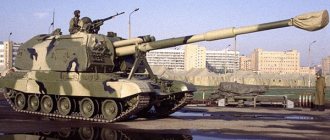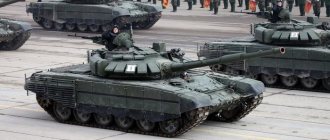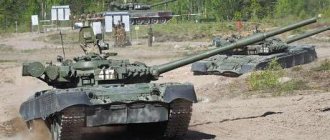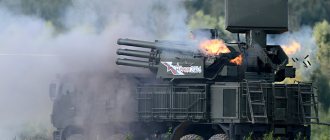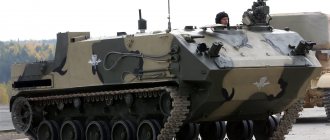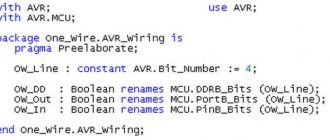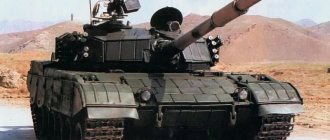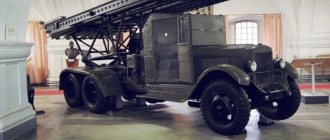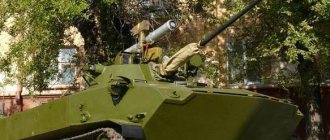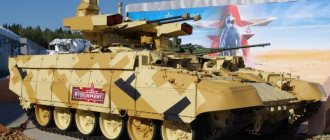The same thing happened in the 50s...60s of the last century, when, as a result of “missile psychosis,” the role of all other types of armed forces, including artillery, began to be unreasonably downgraded. It took a change in the political leadership in the USSR and a whole series of local wars, in which “conventional weapons,” which include self-propelled artillery, showed their relevance. Alas, despite rich experience and many promising prototypes, the developers of our “self-propelled guns” again had to catch up...
On July 4, 1967, Resolution No. 609-201 of the Council of Ministers of the USSR was issued, which opened new pages in the history of domestic self-propelled artillery. In accordance with it, the creation of four models of self-propelled guns began. Three of them are the 152-mm self-propelled howitzer 2SZ "Akatsiya" (see "NiT" No. 4, 2006), the 122-mm self-propelled howitzer 2S1 "Gvozdika" and the 240-mm self-propelled howitzer mortar 2S4 "Tulip" - were to be produced at the Ural Transport Engineering Plant (UZTM) in Sverdlovsk (now Yekaterinburg). The 2S5 “Gyacinth” self-propelled 152-mm cannon, developed at the SKV Perm Machine-Building Plant, was produced there (now Motovilikha Plants OJSC).
Entering service with the Soviet Army from the mid-70s, these artillery systems fully met the requirements that were then set for self-propelled artillery.
However, when the “flowers” began to be mass-produced, the Main Rocket Artillery Directorate (GRAU) issued new requirements to the developers for a new self-propelled howitzer of 152 mm caliber. The main changes concerned a significant increase in the firing range. What is the reason for such a sharp change in the nature of the military’s demands? After all, “Akatsia” and “Gvozdika” were fully consistent with the level of self-propelled guns that were in service with NATO countries at that moment, but “Tulip” simply had no equal (and still has no equal)?
The “casket” opened simply - concerned (to put it mildly!) by the deployment in Western Europe of American Pershing-2 missiles and long-range cruise missiles, which were an ideal “first strike” weapon, the Soviet military-political leadership for a preventive strike on the launchers All types of armed forces have tried to adapt these missiles, from special forces to multiple launch rocket systems (MLRS). It was intended to use a new self-propelled gun for the same purpose.
The artillery unit was supposed to be universal - for use both on self-propelled guns and in towed artillery. At the same time, it was planned to unify the chassis of the new chassis with the chassis of the main tanks that were in service and in production.
The main developers of the self-propelled guns were appointed: UZ) - the lead developer of the Object 316 chassis and the vehicle as a whole, as well as the Tula Instrument Engineering Design Bureau (now NPO Tochnost) - the developer of the fighting compartment, the design bureau of plant No. 9 in Sverdlovsk - the swinging part. Yu.V. Tomashev was approved as the chief designer of the installation, designated GRAU 2S19.
In 1989, the new self-propelled gun was put into service under the designation 2S19 “Msta-S” (S is self-propelled, unlike the towed gun 2A65 “Msta-B”, which was put into service in 1986 and has a swinging part similar to the 2S19). The importance that the USSR Ministry of Defense attached to this system is already evidenced by the fact that for its mass production a special plant was built in Sterlitamak (the first batches of these self-propelled units were produced at the Uraltransmash plant in Sverdlovsk).
By the time it was put into service, according to the agreements reached, both the Pershings and cruise missiles were destroyed, and the Warsaw Pact itself ceased to exist. But the large (compared to Acacia) firing range turned out to be very popular. By this time, several major modernization programs for the main US “self-propelled gun” M.109 had passed in a row in the United States. How much the data of the old (early 60s!) design has changed is evidenced by the fact that the Yankees did not hesitate to replace the gun on their self-propelled guns (for more details, see “NiT” No. 4). Having received its own name “Paladin” in addition to active-missile projectiles, this “old woman” found a “second wind” and clearly left the domestic “Acacia” “behind the flag”. “Msta-S” came in handy...
ZR certificate
The large-caliber self-propelled artillery mount "Msta-S" (or self-propelled gun 2S19) was presented to the public in 1992 as part of the air show in Zhukovsky. Today it is in service with seven countries, but it is most actively used in Russia - according to data from open sources, there are about 600 units of equipment on the balance sheet of the artillery forces.
The “saushka” (as self-propelled guns are called among themselves by the military) was made on the basis of the chassis of an ordinary T-80 tank. There is a massive, completely non-tank turret on it. The 152-mm 2A64 rifled howitzer was chosen as the weapon for the Msta-S.
The main purpose of the vehicle is to destroy tactical nuclear weapons, artillery and mortar batteries, armored vehicles, air defense and missile defense systems, as well as enemy personnel and their field fortifications.
Story
The history of self-propelled guns begins at the dawn of the 20th century. This type of armored vehicles developed especially rapidly during the world wars. Self-propelled guns differ from tanks in the nature of the tasks they solve, as well as in their design - the balance of firepower, mobility and security.
Compared to a tank, self-propelled guns have weaker protection and much higher firepower.
In the Soviet Union, after the war, work on the creation of new self-propelled guns was suspended. At that time, more attention was paid to various missile systems and aircraft. Only at the end of the 60s did the development of several self-propelled artillery systems begin. Some of them are still used today (“Acacia”, “Tulip”, “Hyacinth”).
The Akatsiya self-propelled gun, which had a caliber of 152 mm, was in no way inferior to similar weapons of a potential enemy until the mid-70s, but then NATO countries began developing a new 155 mm howitzer, which had a firing range higher than that of Soviet guns. The enemy artillery was able to fire with impunity at the second echelon of troops and destroy military equipment that had not yet reached the front line.
In the USSR, work is starting to create the next generation of self-propelled guns, with characteristics that would not be inferior to their Western counterparts. Work on the creation of a new 152-mm howitzer begins in several design bureaus at once.
The designers received the official task to create a new 152-mm self-propelled gun in 1980. The new vehicle was named "Msta-S", it was supposed to replace the outdated at that time, 152-mm Akatsiya self-propelled guns.
In 1983, a prototype was ready, which was sent for testing the following year. Initially, the vehicle was made on the basis of the T-72 main tank, but tests revealed significant shortcomings of this solution, and the most important of them was the strong swing of the gun during firing. It was decided to replace some of the elements of the artillery mount’s chassis with those used on the T-80 tank. This solution allowed us to largely get rid of this problem.
In 1986, the stage of state testing began. The Msta-S howitzer was put into service in 1989. In 1986, the 2A65 Msta-B towed gun, which had a similar swinging part, was also put into service. The following year, serial production of the 2A65 began at Motovilikha. It is still used by the armies of the former Soviet republics; more than 1,200 units of these guns were produced.
In 1985, there was an attempt to install this self-propelled gun on a wheeled chassis. The basis for the self-propelled guns was to be the KrAZ-6316 truck. However, tests showed many shortcomings of this solution and further work was abandoned.
A special simulator was created to train the crews of the new self-propelled gun.
For the production of self-propelled guns, a new plant was created in Sterlitamak; its production began in 1988, that is, even before its official adoption. After the collapse of the USSR, production was moved to the Ural Transport Engineering Plant. In 1998, one self-propelled gun cost $1.6 million.
Later, the artillery mount was modernized; it was planned to significantly increase its firing range. The new modification was called “Msta-SM”. The firing range of a high-explosive fragmentation projectile increased to thirty kilometers, and that of an active-reactive projectile exceeded forty kilometers. The gun's rate of fire increased by 1.4 times.
Many developments and design solutions that were created during the work on the Msta-SM self-propelled guns found their application in the design of a new generation self-propelled gun, the Coalition.
At the same time, work was underway to modernize the Msta-S howitzers. These guns were actively used during operations in the North Caucasus. It became clear that the howitzer fire control system did not meet the requirements of the time. In 1998, an automated fire control system was installed on the vehicle; by 2002, the development of special software that could correct the shooting in real time was completed. The cost of the new Msta-S self-propelled guns has increased to three million dollars. There were also attempts to create a new vehicle with a 155 mm cannon, which are used in NATO countries.
Another modernization of the machine was undertaken by the Titan Central Design Bureau in 2012. "Msta-S" received a new fire control system, navigation devices, and the rate of fire was increased to 10 rounds per minute. The self-propelled gun received a new important capability - “fire barrage”. The target is simultaneously covered by several projectiles fired along different trajectories. In 2012, state tests of this modification were completed and the following year 35 units entered service with the troops.
Currently, Msta-S is in service with seven countries. Most of these vehicles are in the Russian army today. Venezuela is in second place, and Ukraine is in third place. In Russia in 2014, there were about 600 such machines, 150 of which were mothballed.
The Msta-S self-propelled howitzer is significantly superior to the guns of the previous generation (Akatsia), it has a greater firing range, rate of fire, and more powerful ammunition. But it is more complex to manage and maintain, and therefore it is quite difficult to prepare an artillery crew.
The cuttlefish principle
The tactics of modern combat suggest that after each salvo you must leave the position as soon as possible and move to another place before the enemy discovers you. As soon as you are spotted (which will definitely happen), you will immediately receive a retaliatory strike. That’s why the unspoken motto of self-propelled gunners is: if you complete the task, you quickly “get away” before it starts.
"Msta-S" is equipped with a special system called "Tucha". Roughly speaking, these are smoke bombs that she can scatter around herself, thereby camouflaging herself in the fog while she leaves - the principle of the ink cuttlefish. It is unlikely to be effective against air strikes, but it is capable of protecting the installation from a motorized rifle enemy, who can fire a salvo at it and seriously damage it. Frankly, it’s hard for me to imagine how applicable this is in real life. If there is already a need to take cover in the smoke, then this probably means that everything is already very bad.
The Msta-S howitzer cannot be classified as an armored monster. It has much weaker protection compared to a tank. So if the Msta-S comes under serious fire, then, of course, it will suffer a fair amount, but such a scenario is unlikely. It's simple: tanks are designed to directly participate in the battle, while self-propelled guns provide support from distant positions and never operate in isolation from the main forces. Being in the depths, it must suddenly crawl out from somewhere, “shy away” and leave as quickly as possible. The installation is capable of firing from closed positions, that is, at targets that are out of line of sight, from a distance of up to 25 km.
The maximum speed of the car is 60 km/h, but it is clear that it will not rush around the field like that. Its main task is to deliver a large caliber to the desired point. 152 mm is a very serious artillery caliber that can change the course of a battle. Fortunately, few have ever witnessed the destruction caused by a battery of such howitzer vehicles. We saw it and were impressed. At the moment of shelling I didn’t want to be nearby at all.
Description of Savushka
The Msta-S self-propelled howitzer is designed to destroy enemy artillery, armored vehicles and anti-tank weapons, headquarters and other command posts, destroy fortifications, as well as destroy enemy tactical nuclear weapons. This is a highly mobile complex that can deliver powerful blows to the enemy in a short period of time and quickly avoid a retaliatory strike.
The self-propelled gun can fire from closed positions and direct fire. The gun can be used in mountainous terrain; the elevation angle of the gun barrel (up to +50°) allows this. Ammunition located in the ammunition rack can be used, or shots located on the ground can be fired.
"Msta-S" is a heavy howitzer (over 40 tons). The fighting compartment is located in the middle part of the vehicle, the control compartment is in the bow, and the power compartment is located in the rear. The hull as a whole follows the geometry of the T-72 tank, but the howitzer's armor is much weaker.
The turret houses the 2A64 gun, as well as seats for crew members: the vehicle commander, gunner and two loaders. The commander's seat is provided with a rotating turret. The turret also contains sighting devices: a panoramic sight (1P22) and a direct fire sight (1 P23).
There is a 12.7 mm machine gun on the roof of the turret. It is controlled remotely. Loading is semi-automatic, it provides 7-8 rounds per minute if internal ammunition is used, 6-7 rounds per minute when feeding ammunition from the ground. The ammunition includes 50 rounds and is located in the turret.
At the rear of the vehicle there is a V-84A 12-cylinder diesel engine, as well as transmission elements. The engine can use six different types of fuel. The chassis is in many ways similar to the chassis of the T-80 tank.
"Msta-S" can use several types of high-explosive fragmentation and active-rocket projectiles, cluster munitions, as well as a number of guided and adjustable projectiles. You can also fire with special ammunition, which is used to jam communications. The self-propelled gun can fire Krasnopol-M1 guided projectiles, which are guided by a laser beam.
The howitzer is equipped with an automated guidance system, as well as a system for restoring aiming immediately after a shot is fired.
Technical characteristics of "Msta-S"
| Weight | 42 t |
| Length (including gun) | 11 m 91.7 cm |
| Armament | 152-mm rifled howitzer 2A64 (50), NSVT machine gun (300) |
| Min. firing range | 6.5 km |
| Max. firing range | 24.7 km |
| Max. speed | 60 km/h |
| Overcomes the climb | at 25 degrees, ford 1.2 m deep |
| Engine power | 840 hp |
| Power reserve | 500 km |
| Crew | 5 people |
Watch episodes of the “Courtry” program with Alexey Rafaenko on the official website of Channel One. And the issue about the Msta-S self-propelled gun is here.
Text: Alexey Rafaenko
Photo: Channel One,
Sergey Savostyanov/TASS, Vitaly Timkiv/TASS, Valery Matytsin/TASS, Petr Kovalev/TASS, Sergey Bobylev/TASS
Soviet-style combat vehicle: test drive of a real self-propelled gun
Use in combat
The howitzer was first introduced into battle in the first and second Chechen conflicts. Despite the outstanding performance, a number of flaws were identified that required significant improvements. For example, the guidance system was outdated at that time. The result was the development of a model labeled 2С19М1.
In the armed conflict between Eritrea and Ethiopia in 1998-2000. Ethiopia had 10 units of 2S19 Msta-S self-propelled guns. Their use created the misleading impression of an air strike due to the large firing distance. The Eritrean troops did not even hear the shots, which led to complete disorganization.
During the Five-Day War in South Ossetia in 2008, units of the 58th Army were located in the conflict territory and had howitzers at their disposal. It is unknown whether they were used during the conflict.
In the military conflict in eastern Ukraine, 2S19s were used by Ukrainian troops. Six of them were captured by DPR and LPR forces in the Debaltsevo Cauldron.
Equipment
Despite the outstanding technical characteristics of the 2S19 Msta-S self-propelled gun, the vehicle will not be able to function correctly without additional equipment:
- The commander's seat is equipped with a combined sight and searchlight for reconnaissance of the area and targeted shooting from cover. The machine gun is equipped with a PZU-5 sight, which is a periscope unit with a panoramic viewing function.
- The driver's seat is equipped with three surveillance devices and one night vision device.
- The gunner has in his arsenal a 1P22 artillery sight for firing from a hidden position and a sight for direct fire.
The crew communicates via an intercom system, and there is also a walkie-talkie for interaction with other crews.
The 1V124 system automatically adjusts the firing vertically, and the horizontal adjustment is performed manually by the gunner of the 2S19 Msta-S self-propelled gun. Technical features include the presence of units that produce smoke screens to disguise the retreat from the position: launchers for 81-mm smoke rockets are installed on the front plate.
The chassis, as mentioned above, was borrowed from the T-80 with minor modifications: the number of links in the track was increased, their weight was reduced, and the weight of the drive wheel, idler wheel, road wheel and shock absorber was reduced.
Verdict
Taking into account the brief characteristics of the 2S19 “Msta-S” (RF) for 2022, work is underway to thoroughly modernize the complex, making it possible to increase the firing range. It is also planned to integrate modern computer systems that allow interaction with the tactical level. In the future, the use of a howitzer as the main strike force of the country's missile forces and artillery. However, in the conditions of modern warfare, the success of an operation depends largely on the firing range. And achieving high performance of 45 km becomes difficult using the existing technical profile and equipment of Msta.
Therefore, by 2022, a large-scale transition to the use of the 2S35 “Coalition-SV” complex is planned.
Technological progress does not stand still; every day new types of weapons appear, in contrast to which ways are being invented to counter them. Such invisible opposition occurs in the field of design excellence in terms of the invention of body armor and armor-piercing bullets.
A similar process is taking place in all areas of the military industry: armor-piercing shells against tanks with thick armor, long-range artillery systems against complexes that make it difficult to detect their own positions, or drones capable of detecting enemy artillery crews at a distance of many tens of kilometers.
After testing each self-propelled gun both in Russia and in the West, flaws in operation are identified and a decision is made to carry out development work (R&D) to modernize the complex and create a new generation artillery system capable of meeting modern conditions of warfare and surpassing in tactical and technical characteristics. characteristics are world analogues.
We can only hope that these samples will remain weapons of defense and not attacks. Peaceful skies to everyone!
Child of the Korean Cold War
The Korean self-propelled gun K-9 “Thunder”, or “Thunder”, is a sudden “fruit” of the “polygamist father” Samsung, which we strongly associate with smartphones and TVs. But in 1989, they had to put aside the washing machine and tape recorders - and take up the trunks with triple energy. And there were reasons for this - North Korea did not want to give up its Asian Cold War. An outdated K-55 with insufficient ammunition was all that was self-propelled and long-range in Korean hangars in case of war. But only seven years later, in 1996, a new creation of the Koreans crawled out of the Samsung workshops, clanging its tracks. And it immediately created a sensation at local training grounds!
The turret and hull of the K-9 Thunder held up well under a hail of mine and shell fragments. The South Korean armor did not “notice” heavy fire from machine guns and machine guns - the bullets simply bounced off, without even leaving scratches. The self-propelled gun was also pleasing with its speed - the 47-ton vehicle easily accelerated on the concrete slabs of the training ground to 67 km/h and made a dashing turn to the firing line. A stop, half a minute to prepare - and the “thundering” “Korean” K9 is ready for the salvo! Eight shells that went into the Korean skies in a minute, heaped up on a target at a distance of 40 kilometers.
The dashing turn of the multi-ton self-propelled gun quickly defeated even the most notorious skeptic generals - they gave the go-ahead to the new self-propelled gun. Thus, the brand new K-9 “Thunder” began to confidently squeeze out the “old ladies” K-55 from South Korean hangars.
© army.mil.kr
Korean self-propelled gun K-9 "Thunder" from .
[edit]Export
The 2S19 was first presented abroad at the IDEX-93 exhibition in Abu Dhabi in 1993. At the demonstration, Msta hit 38 targets out of 40 with Krasnopol guided missiles from a distance of 15 km[13]. In 1995, a second demonstration took place, during which it became clear that it was lagging behind new self-propelled guns (in particular, the South African one) in firing range. As a result, despite the interest of a number of customers, not a single contract could be concluded; the reasons were insufficient range, archaic and non-standard caliber and outdated fire control system[13].
